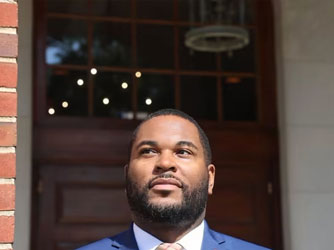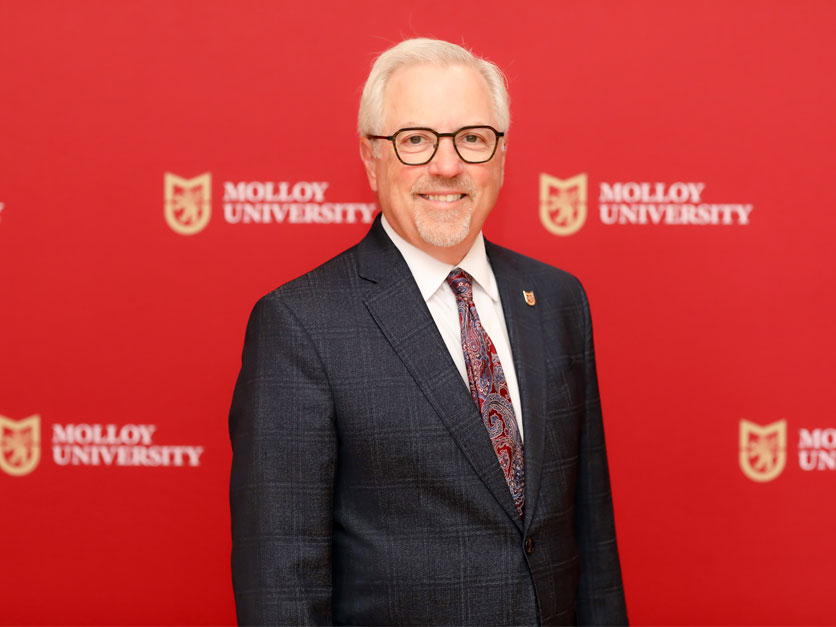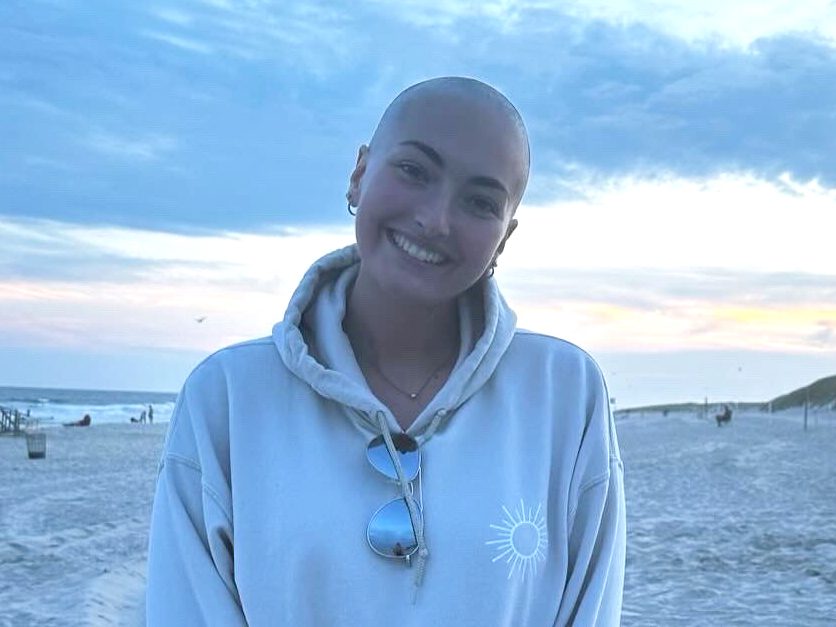July 02, 2024
Molloy leading $3.5M program to bring more students of color into STEM
By Bart Jones, Newsday
 Molloy University this month officially became a Hispanic-serving institution, meaning more than 25% of its students are Latinos.
Molloy University this month officially became a Hispanic-serving institution, meaning more than 25% of its students are Latinos.
Now, in one of its first initiatives since the U.S. Department of Education designation, it is spearheading a $3.5 million federally financed program to bring more students of color into STEM.
STEM stands for Science, Technology, Engineering and Math, and it encompasses a wide variety of jobs, including computer science, engineering, cybersecurity, architecture, geology, physics, astronomy, data science and web development.
Hispanics and other people of color have not gone into these fields in numbers commensurate to their percentages in the general population for reasons such as a lack of role models in STEM jobs and the fact that many attend underfunded high schools, leaving them behind as they enter college, according to advocates.
Molloy is heading a consortium of seven Catholic colleges in the region seeing growing numbers of Hispanic students and hopes to address the imbalance. The initiative aligns with the Catholic Church’s “option for the poor," which is championed by Pope Francis. The option for the poor calls for Catholics to serve the poorest and most vulnerable people, thereby creating a more just society. The STEM program would do just that by bringing more students of color into these fields and their well-paying jobs.
“We are helping alleviate some of the burdens that underrepresented students face,” said DJ Mitchell, vice president for diversity, equity and inclusion at Molloy.
Gina M. Florio, dean of the School of Arts and Sciences at Molloy, said in a statement: “We see this work as integral to our missions as Catholic institutions of higher education — serving our communities, expanding access to high-quality, values-driven education, and working together toward the betterment of society. This grant is mission in action.”
Mitchell said there are similar programs around the country, but this is the first one pulling together a group of Catholic colleges. The other schools are St. John’s University, St. Joseph’s University, Manhattan College, St. Francis College, St. Thomas Aquinas College and Mount Saint Mary College.
The grant came from the National Science Foundation’s Louis Stokes Alliances for Minority Participation program. It is the first time Molloy applied for it. “I was really just floored to receive the grant,” Mitchell said in an interview.
The colleges hope to assist a total of 175 students a year over a five-year period through various methods: providing tutors and mentors; giving financial assistance for buying textbooks, taking tests such as the GRE, or attending conferences; and offering guidance on how to apply for graduate school. The students also will take part in seminars and conduct independent research with professors.
The grant will not provide money for tuition, but organizers believe the support they will offer could be crucial for attracting and retaining Hispanics and other students of color in STEM.
“We know that there are many underrepresented students … who start off with an intention to go into STEM fields and they kind of drop out before they finally have that degree,” said Teresa Delgado, dean of the College of Liberal Arts and Sciences at St. John’s.
It happened to her, she said, when a professor told her she “didn’t have a mind for math” and she changed her major. Delgado is Puerto Rican.
“As a first-year student, hearing that from a professor was quite consequential,” she said. She ended up studying religion and philosophy, and got her PhD.
Mitchell explained that “underrepresented” means the percentage of students of color in STEM fields does not match their numbers in the general population in the United States.
Student populations booming
Hispanics represented 15% of the total STEM workforce in 2021 in the United States, though they made up about 19% of the population, according to the National Science Foundation.
Underrepresented minorities in general accounted for 24% of STEM workers but 31% of the population in 2021, the foundation said.
“This underrepresentation is rooted in the nation’s history of excluding people of color and is perpetuated by systemic barriers that remain despite measures like affirmative action and the Civil Rights Act,” Mitchell said in a statement.
“These barriers include a higher likelihood of attending underfunded schools, implicit biases against students of color, an overreliance on standardized tests that do not always accurately predict success for these students, and a limited number of mentors in STEM who resemble them.”
Organizers said the seven colleges in the Lower Hudson Valley Catholic Colleges and Universities Consortium — to which Molloy and the others belong — are primed to help bring more Hispanics and students of color into STEM. For many, their minority student populations are booming.
At Molloy, Hispanics went from 14.7% to 26.5% of the undergraduate student population between fall 2014 and fall 2023, Mitchell said. On June 3, the U.S. Department of Education officially declared it a “Hispanic Serving Institution” since it met the 25% benchmark.
Other schools in the consortium that are now classified as Hispanic-serving institutions are Manhattan College and St. Francis College.
The next level of colleges with growing Hispanic populations is “Emerging Hispanic Serving Institutions,” with 15% to 24.9% of their student bodies Hispanic. Those include St John’s, St. Joseph’s and St. Thomas Aquinas.
The numbers of other students of color, including Blacks and Asians, also have been rising at some of the schools. Molloy, for instance, is now “minority majority,” accounting for 52.5% of undergraduates.
91 in STEM at Molloy in 2022-23
Molloy had 91 underrepresented students enrolled in STEM during the 2022-23 academic year. STEM majors at Molloy include biology, computer information systems, computer science, earth and environmental sciences, and mathematics.
At St. Joseph's, 40% of students enrolled in STEM programs are Hispanic or of color, said Bob Herr, associate vice president for enrollment management on the Long Island campus. Its STEM programs include biology, chemistry, computer information technology, computer science, mathematics and medical technology.
Mitchell said that normally some of the colleges in the consortium “compete with each other, but in this instance we are collaborating to show the unique impact of Catholic education on the STEM pipeline.”
Pamela Lovejoy, an assistant professor of biology who is St. Joseph's lead coordinator for the initiative, said the program will allow its students to collaborate with their peers from the other universities.
Delgado noted that there is a shortage of STEM workers in New York State, even though many of the jobs pay well. She added that “research has shown that diverse teams develop more and better solutions.”
She said she sees multiple reasons students of color are underrepresented in STEM.
“What I hear from students is very similar — that they either receive or internalize messages that somehow they can’t cut it,” she said. Or “they may not have the examples within their own community of those who have been successful in these areas.”
Sometimes Hispanics and other students of color will start off studying in STEM fields, but then drop out and go into a science-related field where they do not have to take “as many heavy science courses,” such as environmental studies, she said.
The leaders of the initiative aim to change that.
“We are going to design our programs to make sure that nobody falls through the cracks,” Mitchell said.


